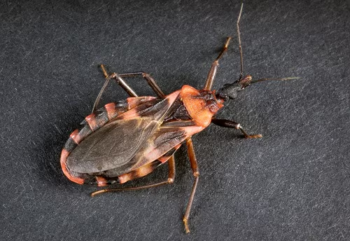Evelyn P. Vance has dressed up as Cupid, Donald Duck, Santa Claus, the Easter Bunny, a pirate and a pilgrim. They’re all just supporting characters for her main role as a Guardian Angel for people suffering from Alzheimer’s disease or dementia.
“Being a Guardian Angel has helped me,” said Vance.” I’ve become a better person by doing this – and I found out I’m just goofy.”
Vance lost both her parents in the past year and her mother suffered from dementia. Her own experience led her to get involved with the County of San Diego’s Guardian Angels program which pairs up elderly residents who suffer from Alzheimer’s or other dementias in long-term care facilities with volunteers to reduce isolation.
“I was lucky to have fallen into this, but only after I went through such horrible experiences with my mom’s dementia,” she said.
The Guardian Angels program was organized in 2001 by County Supervisor Dianne Jacob and then-Supervisor Pam Slater-Price and is overseen by the Glenner Memory Care Centers through a grant from the County Health and Human Services Agency’s Aging & Independence Services.
Vance is willing to dress up in costumes for various holidays and events because she knows the joy it brings people and even if it’s for a fleeting moment, it seems to bring back memories for those suffering.
“People think they have to be dignified, but some want you to just make them laugh,” said Vance. “These people have had a life and they just want to laugh.
“When they see Santa Claus, oh my!” she added. “They just love it. There is no such thing as childish.”
“Alzheimer’s doesn’t take a break for holidays or three-day weekends,” said David Wallace, the interim chief executive officer of Glenner Centers. “This program tries to break the isolation of residents in assisted living communities.”
Wallace said many families try to balance their own busy everyday lives with taking care of parents or loved ones, and programs like the Guardian Angels gives them some reassurance that it can be managed.
Many times when a child makes the decision to take care of an older loved one – or circumstances require it – it consumes everything and become your primary role.
“Especially when you have someone with a big heart, that becomes their exclusive role and they become the caretaker and are no longer the husband, son or daughter,” said Wallace. “There’s a lot of ‘should’ in caregiving. I should be a dutiful daughter or son; my parents took care of me (growing up) therefore I should do this for them.
“There might be a third way between doing everything and doing nothing and the third way may be to provide some additional support at a day care center or long-term care setting.”
Wallace said family members take solace in knowing that someone is visiting their loved ones while they are at work or doing their day-to-day family activities. There are also elderly people that have no local family – especially retired military personnel who chose to stay in San Diego after their service.
Noting her own experience before her parents passed, Vance says utilizing an adult day care or assisted living facility allows the caretaker the break they need.
“After the daycare center, you can enjoy the evening with them,” she said. “The fact is I was able to say I enjoyed every moment with my parents because I wasn’t exhausted.”
There are many ways people can get involved with the Guardian Angels according to the program’s director, Mark Maxwell. In less than a year, he’s taken a handful of volunteers and grown that to more than 150 through outreach to schools, community groups and at festivals and job fairs.
People can do anything from visiting seniors for conversations and walks to calling bingo to playing games with them. Activities can even be tailored to your talents.
“We get musicians, magicians, actors, all types of talent and they put on different activities for the residents,” Maxwell said.
Volunteers can also help with coordinating events, being ambassadors that spread the word about the program in the community, helping with social media or bringing in their therapy certified pets. Volunteers must be at least 16 years old, pass a background check, get fingerprinted and have a TB test.
There are an estimated 60,000 San Diegans living with Alzheimer’s or other dementias currently, and that number is predicted to increase to 94,000 residents by 2030. It’s the third leading cause of death in the region.
“This program could grow to ten times its current size and we’d still be scratching the surface when you think about the number of people that are afflicted with Alzheimer’s disease,” said Wallace. “Alzheimer’s will take whatever you will give it and it will keep taking more so the idea is to make sure the people who are afflicted will have as much support as possible.”
The program also fits with the County’s Alzheimer’s Project which brings together representatives from various community groups to focus on how the region should respond to the challenges of the disease. The Project aims to support local world-class research into finding a cure and to ease the burden of the disease on those affected and our health care system.
“What we’re trying to do with the Guardian Angels program is make San Diego County a center of excellence for this kind of program that could be used in Orange, Riverside or Imperial Counties and even outside of California,” said Wallace. “We’d like to make San Diego a destination for people that are looking to provide volunteer support in long-term care settings.
Vance is confident once someone volunteers with the Guardian Angels, they’ll be hooked.
“You walk in and you see that smile and you’re never going to leave again,” she said. “I’m eventually going to be in one of these homes and I want the Guardian Angels to be the best they can be to take care of me. I’m going to say “’Hey, I was one of those!’”






